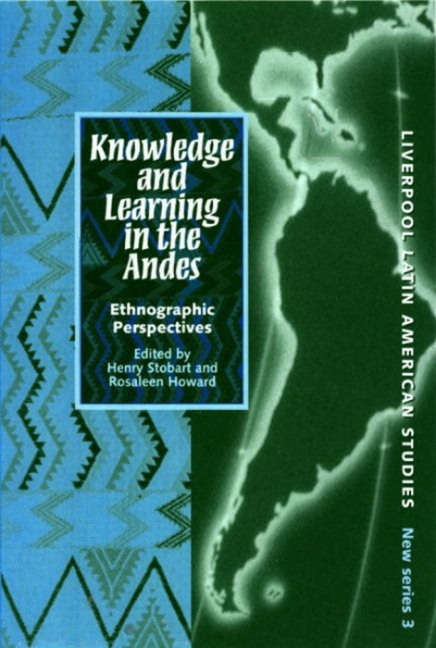Book contents
- Frontmatter
- Contents
- List of illustrations
- List of contributors
- Introduction
- Part I: Multiple Media in the Creation and Transmission of Knowledge
- 1 Yachay: The Tragedia del fin de Atahuallpa as Evidence of the Colonisation of Knowledge in the Andes
- 2 Transmission of Knowledge through Textiles: Weaving and Learning How to Live
- 3 Coloured Knowledges: Colour Perception and the Dissemination of Knowledge in Isluga, Northern Chile
- 4 Interlocking Realms: Knowing Music and Musical Knowing in the Bolivian Andes
- Part II: Knowledge, Power and Authority
- Part III: Conflicting Paradigms of Knowledge
- Index
3 - Coloured Knowledges: Colour Perception and the Dissemination of Knowledge in Isluga, Northern Chile
from Part I: Multiple Media in the Creation and Transmission of Knowledge
- Frontmatter
- Contents
- List of illustrations
- List of contributors
- Introduction
- Part I: Multiple Media in the Creation and Transmission of Knowledge
- 1 Yachay: The Tragedia del fin de Atahuallpa as Evidence of the Colonisation of Knowledge in the Andes
- 2 Transmission of Knowledge through Textiles: Weaving and Learning How to Live
- 3 Coloured Knowledges: Colour Perception and the Dissemination of Knowledge in Isluga, Northern Chile
- 4 Interlocking Realms: Knowing Music and Musical Knowing in the Bolivian Andes
- Part II: Knowledge, Power and Authority
- Part III: Conflicting Paradigms of Knowledge
- Index
Summary
Since 1986, I have been doing fieldwork in Isluga in the highlands of northern Chile, east of Iquique and adjacent to the frontier with Bolivia. One of the aspects of Isluga culture that immediately attracted my attention was the way in which people use colour, probably because of my own background of having originally trained at art school. As a practitioner in the use of colour, I have long had reservations about Berlin and Kay's (1969) linguistic theory concerning the evolutionary sequence of what they called Basic Color Terms. However, when in November 1996 I presented the paper on which this article is based, a considerable number of scholars of human vision were already extending Berlin and Kay's research. Most of the contributors to the book edited by Hardin and Maffi (1997) (itself an outcome of a conference held in 1992) accepted Berlin and Kay's work on linguistic anthropology. In his chapter, however, Lucy (1997) warned against conflating cognitive and linguistic categories. More recently, Saunders (2000) has published a sustained review of Berlin and Kay 1969, their subsequent revisions and the research of colour scientists who have adapted their premises. She argues that these researchers have established a ‘scientific reality [that] replaces ordinary reality with a “data-base” of encodings and theoretical models’ (Saunders 2000: 89). In contrast, she perceives colour to exist ‘through noticings and reportings as an ensemble of social relations’ (Saunders 2000: 93). This is a view with which I have considerable sympathy. Therefore, I wish to begin my chapter by giving the reader some insights into my experiences of ethnographic fieldwork in the Andes, starting with issues that Isluga people have expressed to me without my prompting, as a grounding for developing an analysis of some of the ways in which they use colour, and to which my training has sensitised me.
- Type
- Chapter
- Information
- Knowledge and Learning in the AndesEthnographic Perspectives, pp. 56 - 78Publisher: Liverpool University PressPrint publication year: 2002



